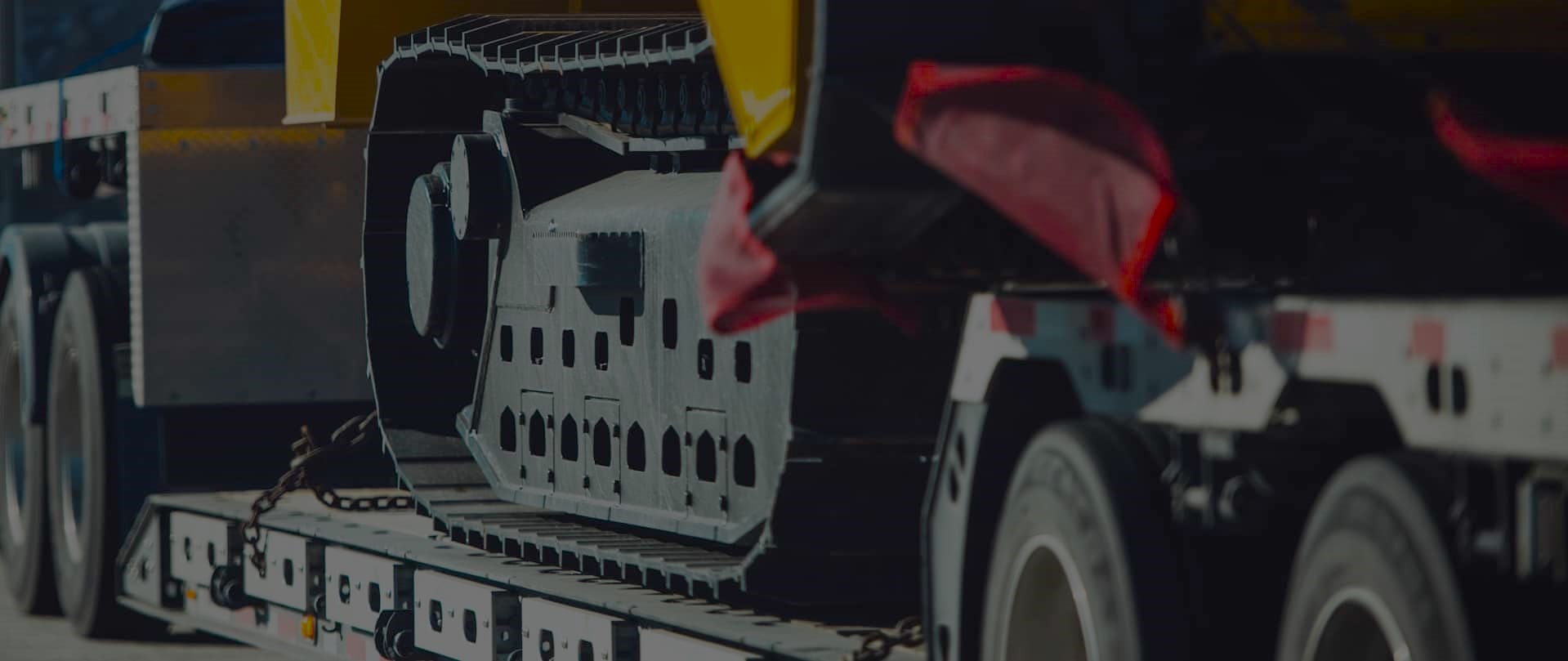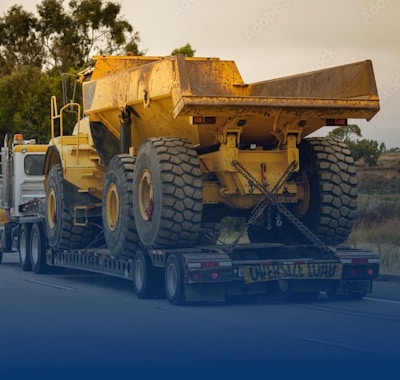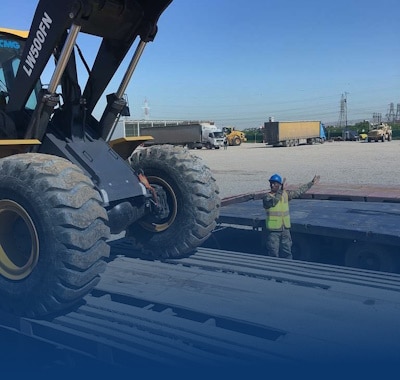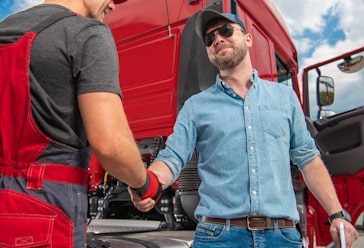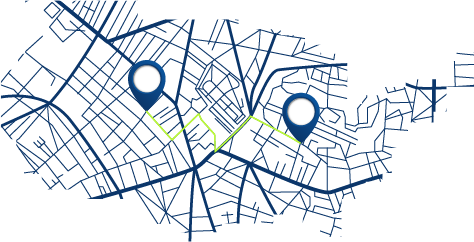Northeast Low-Clearance Bridges: Navigating Oversize Loads
Freedom Heavy Haul can offer expedited Pickup and Delivery for any size shipment anywhere in the USA. Contact us today for No Hassle, No Pressure Pricing.
Older spans and 20th‑century parkways squeeze clearance margins, raising strike risk for any truck or heavy equipment moving on a tight schedule. New York reported nearly 1,100 strikes from 2015–2020, and a single overheight hit can cost $500,000 to $1,000,000 to repair.
Standard modern design aims for 16’6″ vertical clearance, but posted numbers are often set about 3″ lower to allow for thermal movement and ice. Many parkways still ban commercial trucks because those routes were built long before today’s freight profiles.
Signage, routing, and pre‑trip checks matter. One wrong turn from an all-purpose GPS can lead a driver straight into a low clearance trap. Seasonal overlays, work zones, and road overlays can shave inches and change a safe route into a risk.
This guide will show practical steps to pick the right route, verify clearance data, and use safeguards like pilot cars and overheight detection so you protect people, equipment, and your reputation.
Why low-clearance bridges in the Northeast are a big deal for trucks and oversize loads
In busy corridors, repeated overheight strikes have turned certain New York routes into costly trouble spots for freight operators. The state recorded nearly 1,100 bridge strikes from 2015–2020, and a single overheight hit can cost $500,000 to $1,000,000 to repair.
Bridge strikes by the numbers
New York is a national outlier: hundreds of cases in a five-year span have driven up damage and delayed freight. Fatalities occurred from 2014–2018 when large trucks struck overpasses, and counties like Westchester report multiple repeat hits in single years.
Older infrastructure and tight route geometry
Many spans and parkways were built for cars in the 1930s–40s. In new york and new jersey, reduced vertical room and narrow lanes funnel commercial traffic into fewer safe options. Short ramps and tight merges make last-second detours risky for truck driver teams.
Design basics and posted heights
Modern design sets a 16’6″ minimum for new highway crossings, but posted clearance signs usually show a height about 3 inches lower to allow for thermal movement and overlays. Respect the sign: a hit means the vehicle exceeded the posted number in real conditions.
- Safety burden: strikes mean major property damage, long closures, and insurance consequences.
- Practical rule: check current clearance data and use CMV-specific routing rather than generic maps.
How Northeast low-clearance bridges impact oversize loads
Clearance is measured in feet and inches at the lowest point under a span. Inspectors log that minimum for each travel direction, and a single low spot controls safe passage.
Clearance realities: feet, overlays, and seasonal change
Pavement overlays at the minimum point can cut available height by inches. Snow and packed ice do the same in winter. That makes posted numbers conservative by design.
Posted clearances are often about three inches lower than laboratory measurements. That safety margin accounts for thermal movement, temporary surface work, and vehicle bounce. In practice, a trailer that “fits on paper” still risks contact.
Highway vs. parkway vs. local roads
Highways are engineered for commercial traffic. Parkways often carry the label “Passenger Cars Only”, with low bridges common by design. Examples like the Belt Parkway’s 9′-8″ fog-line posting show how tight some corridors get.
Local streets in dense areas funnel tall vehicles under legacy structures near terminals and yards. Simple detours—exit before the overpass and re-enter—work if signs are seen early. Verify critical clearance data in advance, especially for tall trailers or shifting equipment.
- Clearance is dynamic—measurements change with overlays, weather, and work zones.
- Know jurisdictional rules: a vehicle legal by one authority can still be too tall for a nearby span.
- Read warning signs early so you have room to choose a safer route.
Plan-first routing: a step-by-step method to avoid low bridges before you roll
Start every long haul with a mapped plan that prioritizes verified vertical clearances and truck-legal routing. Use a CMV profile in your navigation and keep firmware and maps current. That prevents non-trucking routing from steering drivers onto restricted ways.
Cross-check multiple sources. Pull a current Motor Carrier atlas and your state DOT clearance data. States keep geometric bridge databases and clearance cards; compare those numbers with your GPS feed.
Apps, atlas, and dispatch checks
Pick route-planning apps that overlay official DOT clearance data on Google or Bing maps. That visual layer highlights problem points before you commit to a path.
Call shippers and receivers for truck-safe directions near terminals. Confirm any local “Passenger Cars Only” segments and note low clearance pinch points on the last mile.
- Print or save offline directions so a lost signal can’t reroute a truck onto a parkway or wrong ramp.
- Prebuild alternate routes for seasonal work zones where overlays or ice may shave inches off posted height.
- Use pilot cars for tall or sensitive equipment to scout pinch points and give room to reroute.
| Source | What to check | When to check | Action |
|---|---|---|---|
| CMV GPS | Truck, trailer, load dimensions; routing rules | Before dispatch; firmware updates weekly | Lock CMV profile; export route |
| Motor Carrier atlas | Posted restrictions and alternate ramps | Plan stage for every long haul | Mark detour waypoints |
| State DOT clearance data | Measured vertical clearances, recent changes | Final check day of departure | Adjust route; notify driver |
| Receiver/Shipper | Local access, yard pinch points | 24–48 hours before arrival | Confirm gate height and last-mile plan |
Close the loop: after the trip, update internal maps with any new signs or work zones. That small step helps the next truck driver avoid surprises and keeps your routing system reliable.
Northeast hotspots and recurring problem areas to include in your route risk review
Historic road layouts and old crossings create mapped trouble spots that deserve extra planning time. City parkways with “Passenger Cars Only” postings and short on‑ramps are common examples. One missed sign can funnel a truck into a dead end under a low bridge with no easy turn.
New York parkway examples include the Belt Parkway fog line posting as low as 9′-8″. Westchester has sites that show multiple strikes in a single year. These repeat-offender places should be flagged in dispatch maps.
- Mark down corridors where parkways and short ramps combine to make exits hard once committed.
- Flag railroad trestles on new jersey approaches; many are privately owned and sit very low, so plan around them.
- Map sites with frequent damage reports so drivers know where a wrong turn becomes a stuck truck.
Assume posted clearances are measured at the fog line or crown and plan for the minimum. Check satellite and street imagery during route rehearsals, confirm alternate highway options near river crossings, and brief the driver on exact exit points if warning signs appear.
Trailers and tall equipment take the worst of these errors. Give every load extra time and a conservative route that prioritizes clearance and safety over the shortest distance.
On-the-road tactics when a low bridge is ahead
A clear, early sighting of a posted restriction gives a driver the best chance to avoid trouble. See the sign, slow, and plan your next exit without haste.
Read and heed warning signs early; exit-before detour options that work
Spot warning signs at the first sightline and treat them as a firm cue to change course. Exiting a mile earlier is safer than squeezing under a tight overhead.
Simple detours—leave before the structure, use the next safe ramp, and re-enter when clearance is confirmed.
Pilot cars and overheight detection system use
Run pilot cars well ahead with calibrated poles so they can test vertical room and radio the truck in time. Agencies also use overheight detection systems to alarm drivers; treat those alarms as hard stops.
When to stop, air down, or call for assistance
If you misjudge, stop safely, set out warnings, and call dispatch or recovery. Airing down tires can free a stuck vehicle but only under expert guidance—Seattle 2017 shows it can work, yet it is not a first choice.
Never rush because of time pressure. A quick wrong move risks severe damage and long delays. When in doubt, call for professional help and protect the vehicle, the equipment, and the structure.
| Situation | Immediate action | Why it matters |
|---|---|---|
| Warning signs visible | Exit early; confirm alternate route | Avoids last-second maneuvers and potential strikes |
| Pilot car ahead | Follow pilot; verify pole clearance | Gives real-time clearance test before committing |
| Overheight alarm | Stop; call dispatch; pick detour | Alarm indicates risk—proceeding invites damage |
| Stuck under portal | Set warnings; request recovery | Safe recovery prevents injury and further damage |
Avoid these common routing mistakes that lead to bridge strikes
A single wrong turn guided by a car GPS often leads straight onto restricted parkways or under a low bridge. Multiple New York cases show drivers and trainees following consumer navigation or handwritten notes into prohibited corridors, sometimes with a trailer roof ripped off.
Make sure your team cross-checks every route on CMV maps and freight apps before dispatch. Do not trust directions intended for cars; they will route trucks onto passenger-only ways and tight passages.
- Print or save offline CMV-safe routes so signal gaps don’t force a bad follow-the-screen decision.
- Peer-verify route notes: another driver can spot risky turns or low-clearance markers you might miss.
- Call ahead to the receiver—handwritten directions from car-driving staff often omit trailer restrictions.
- Save safe waypoints like exits and truck plazas to give drivers controlled places to pull off and recheck a route.
One wrong instruction can end your day and damage trailers and light freight. A quick pre-roll review of signs and the first decision point on each leg is a small habit that pays big dividends.
Compliance, liability, and costs for trucks, drivers, and trucking companies
One overheight collision often starts a chain of inspections, citations, and costly repairs. Agencies treat these events seriously, and enforcement looks at route choices, posted signs, and navigation used before the strike.
Tickets, citations, and job risk for drivers
Drivers can face fines, job suspension, or criminal charges like reckless endangerment in severe cases. Agencies record incidents and may cite exceeding posted heights or ignoring restrictions.
A single citation can end a shift, trigger internal reviews, and place a truck driver’s record at risk.
Repair bills and who pays
Repairing a bridge after a strike typically runs between $500,000 and $1,000,000. That figure excludes downtime, detours, and lost revenue while equipment sits in repair.
| Who | Typical outcome | Notes |
|---|---|---|
| Trucking companies | Insurers pursued | Liability for vehicle and property damage |
| Public owner | May cover immediate repairs | Recovery depends on vehicle ID and claims |
| Hit-and-run cases | Public pays | Cost recovery often fails without identification |
Practical note: document route planning, clearance checks, and driver briefings. Trailers usually show visible damage—roof peel or door deformation—so quick evidence helps or hinders recovery.
Promote a “stop and call” culture. That short pause at a posted low clearance can prevent massive damage to equipment, bridge structures, and a company’s reputation.
Engineering and infrastructure impacts from overheight hits
Repair crews see the same patterns after a hit: crushed portals, bowed flanges, and severed strands. These failures show where a vehicle first meets a structure and where engineers check for hidden loss of capacity.
What gets damaged: steel members and prestressed concrete
Steel portals, sway frames, and lower flanges usually take the first strike. Damage can be bent sections, cracked welds, or local buckling. In some cases, heat-straightening is used to recover yielded steel and restore geometry.
When heat won’t do the job, crews cut out and replace the damaged members and fit new fabricated pieces with temporary falsework for support. That work is precise and time-consuming.
Prestressed concrete girders react differently. A flange or web hit can sever strands. GRABB-IT strand couplers can reconnect broken tendons and restore much of the ultimate strength, but lost pre-compression usually remains unless external post-tensioning is added.
Temporary fixes versus full replacements
| Type | Typical use | Pros / Cons |
|---|---|---|
| Heat-straightening | Minor steel deformation | Fast, cost-effective; not for severe fractures |
| Strand couplers | Severed prestressing strands | Restores strength; does not fully return original compression |
| Span replacement | Widespread web loss or shifted spans | Permanent fix; long closure and high cost |
Some agencies take the chance to add inches of free height during full replacements. Washington State examples show switching to shallower precast slabs to remove a posted clearance restriction entirely.
Extreme cases can be dramatic. A raised dump bed on I-16 in Georgia shifted an overpass six feet and led to demolition. Those events create long detours, slow highway freight, and raise repair bills fast.
Road users pay the price: closures detour traffic, delay shipments, and force quick temporary work that still costs time and money. Trailers and equipment suffer too; even small strikes can deform roofs, damage cargo, and require inspections.
Planning takeaway: engineering fixes are costly and disruptive. The best protection is prevention—route and operational checks that keep trucks and tall equipment clear of overheads.
Make every load count: practical next steps to route oversize loads safely and on time
Make every move conservative, and plan each trip with clear margins: verify equipment and trailer height, set the CMV GPS profile, and lock the route before departure.
Build a repeatable pre‑trip routine. Give drivers printed plans that show detours and last-safe exits. Use pilot cars for tall loads, check state clearance databases, and add time buffers so decisions stay safe, not rushed.
Make sure your dispatch and drivers can stop the run if a sign or sensor disagrees with the plan. Track post-trip notes on changed postings or work zones and fold those updates into company routes so every future load arrives on time and without damage.
